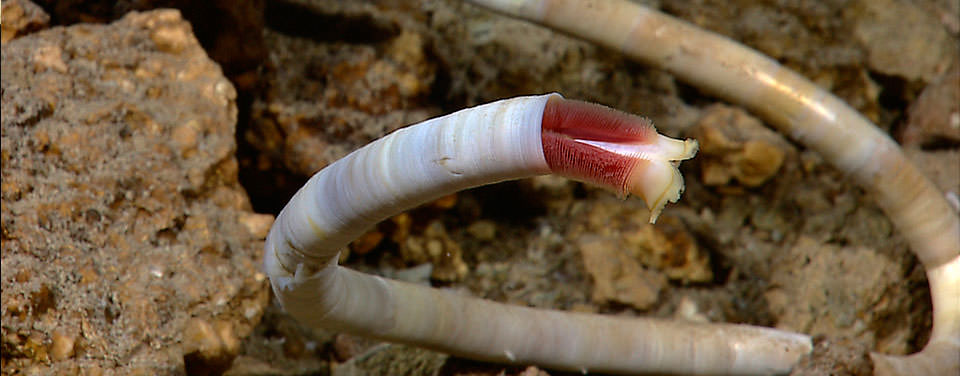What can the ocean teach us about life on other planets?
Life in some parts of the ocean may be similar to conditions on other planets and moons.

Tubeworms that grow near the boundary where hot vent fluid mixes with cold seawater on the ocean floor are an example of extremophiles that broaden our perspective on where to look for life. Chemosynthetic bacteria living inside the tubeworms derive energy from chemicals emitted in the hot water of hydrothermal vents.
Life on Earth is found in conditions ranging from the coldest arctic ice to extremely hot hydrothermal systems on the ocean floor. Microbes are also found in very acidic conditions, very salty conditions, and very alkaline conditions.
These microbes are called "extremophiles" (which means 'lovers of extremes').
While conditions on the surface of the Earth where humans are happy are likely to be extremely rare outside of our home planet, the range of conditions in which microbes are found on Earth are more likely to be found on other planets and moons.
Some areas of our oceans, for example, may be similar to conditions found elsewhere in the solar system.
Jupiter's moon Europa is completely covered by ice, but the tidal energy generated by giant Jupiter is so strong that a global ocean likely exists under the ice that could be 10 times as deep as what we find on Earth. Many scientists think that hydrothermal vents may exist at the bottom of this vast ocean.
This is exciting news, because microbes are found in abundance in hydrothermal vent systems in our oceans.
Understanding extreme life on Earth might help us identify environments on other moons and planets where life could exist.
Search Our Facts
Get Social
More Information
Last updated: 06/16/24
Author: NOAA
How to cite this article